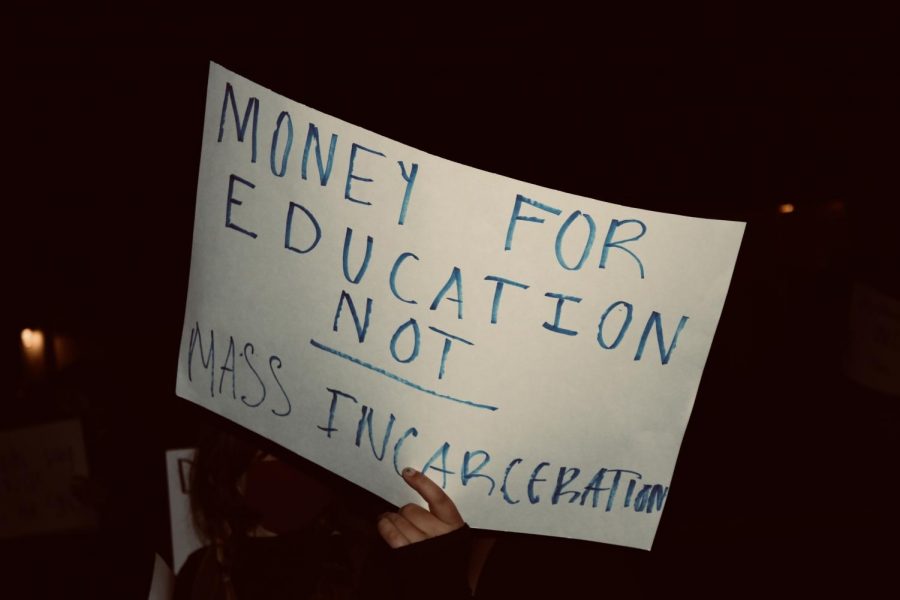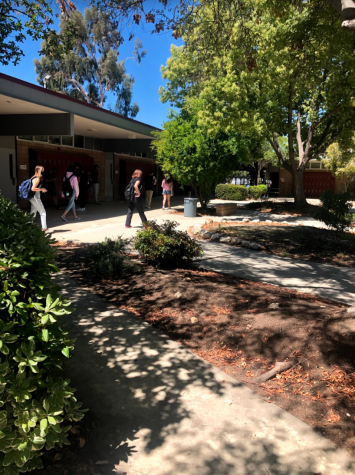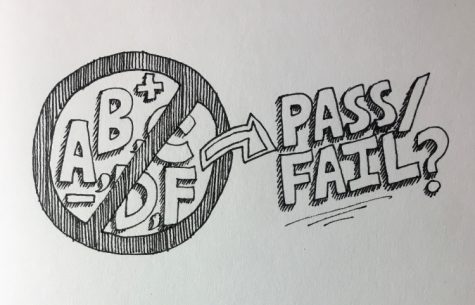Students say “no” to the SRO
An armed School Resource Officer (SRO) has been regularly present on the campus of CHS since the position was first instituted in 2009. Today, this practice is being challenged. Students developed the campaign to “Say No To The SRO” in the early summer of 2020 during a nation-wide reckoning with police brutality and racially biased policing. The Claremont Student Equity Coalition, a conglomerate of student organizations dedicated to the promotion of racial equity and student wellbeing at CHS, leads this movement. Its nine clubs — the Black Student Union, the Young Democrats, the Asain Student Alliance, the Future Minority Leaders, Best Buds, Environmental Justice Club, Women of Color Empowerment Club, Feminist Club, and Disarm Hate — are united by one unwavering demand. They want the CUSD Board of Education to completely remove the SRO.
Roughly seven months have passed since students first voiced their concerns about a regular armed campus police presence to the CHS administration. The administration has not taken concrete steps towards removing the SRO position since. However, student efforts have not let up. Members of the Equity Coalition and members of the general student body have attended every single public Board of Education meeting since June, making public comments in support of the Say No To The SRO campaign. They have organized a protest against the SRO, gathered anonymous student testimony regarding the SRO, compiled national data proving that SRO programs are racially biased and universally unsuccessful in deterring on-campus crime, gathered larger community support, and prompted the Claremont Police Oversight Commission to create a separate Ad-Hoc committee to research just how effective or ineffective the CUSD SRO really is. For months, they asked the Board of Education to make the SRO a meeting agenda item so that thorough discussion could be had and real action could be taken on the matter.
On December 17th, 2020, the SRO was added to the agenda of a CUSD Board of Education meeting per repeated student requests. During the meeting, there was limited time for public comment. Instead, a presentation by CHS administration and Claremont’s Chief of Police was delivered to the Board and the public. It explained the role of the SRO.
“What the presentation dangerously forgot to mention was the reality of the SRO’s implementation, which is very different from its alleged original purpose,” Kalilah Hamid, CHS senior and Vice President of the Young Democrats Club, said.
Hamid has been deeply involved in the SRO removal campaign since its inception. She is concerned that the presentation, which did not mention race as a factor, did not paint a holistic picture of the reality of CHS policing with respect to differences between student demographics.
“Members of the Board of Education are the only people with the power to vote to remove the SRO,” Hamid said. “They should know the whole story. This presentation does not account for racial disparities in policing, it lacks statistics, and it does not prove that the SRO deters crime. It only says that the SRO is supposed to do so. But what is really happening?”
CUSD-specific data on SRO crime prevention is not yet available to the public (it is currently being gathered by the Claremont Police Commission SRO Ad-Hoc committee). Nationally, SROs do not lower student crime rates. They increase them. According to the Justice Policy Institute, schools with a designated school law enforcement officer on duty had disorderly conduct arrest rates close to five times those of comparable schools without such an officer. But who bears the brunt of this rise in student criminalization? According to the U.S.Department of Education Civil Rights Data Collection for the 2013-2014 school year, Black students are three times as likely as white students to be subjected to school related arrest and seventy percent of students referred to law enforcement are Black or Latinx. The rise in arrests caused by an SRO affects students of color more than white students.
The Claremont Student Equity Coalition has assembled its own presentation on the SRO that will be presented to the Board of Education during a public meeting on February 18th. It is heavy in statistics and contains a mixture of qualitative and quantitative data regarding national and local SRO efficacy with especial respect to racialized policing and ableist policing. It also contains refutations to popular arguments made in favor of the SRO position, such as the belief that the SRO can prevent a school shooting. The presentation claims that this is a myth, citing a 2018 Washington Post analysis which found that 198 of 200 gun violence incidents on school campuses occurred, uninterrupted, despite the fact that SROs were present. The presentation also provides examples of alternatives that can accomplish what the SRO intended to. Some include peer mediators (which would be completely free), unarmed student safety coaches, and restorative justice coordinators.
In the end, the outcome of this historic CUSD campaign to remove the SRO is completely in the hands of its Board of Education. The Coalition’s main goal is to convince the majority of the Board to vote no to the SRO. If you are interested in hearing CHS students make their case, tune in to next month’s virtual meeting. The meeting information will be available on the CUSD website the day of.
Hello there! Our goal is to provide relavent, engaging journalism for readers of all ages. Your donation will support the student journalists of the Wolfpacket at Claremont High School, and will allow us to purchase equipment, print our monthly issues, and enter in journalism competitions. We appreciate your consideration!

Asiya Junisbai is an Opinions Section editor that has been with the Woflpacket since her sophomore year. As a senior at CHS that is finishing high school...








